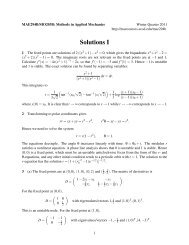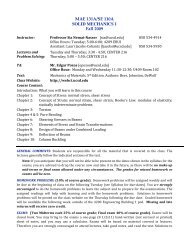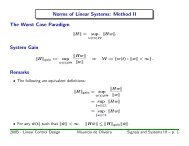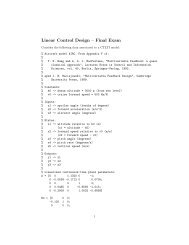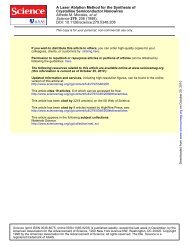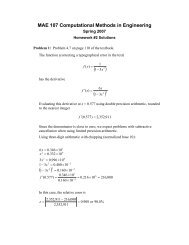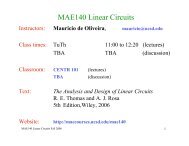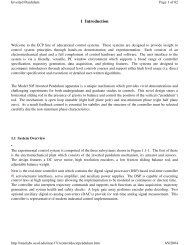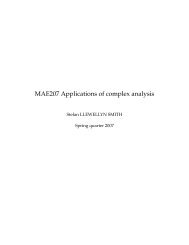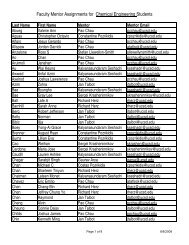solution
solution
solution
You also want an ePaper? Increase the reach of your titles
YUMPU automatically turns print PDFs into web optimized ePapers that Google loves.
asym_1 = 20*log10(ym);<br />
figure(2),subplot(2,1,1),semilogx(omg,asym_1,'--'),hold on<br />
xlabel('\omega'),ylabel('gain factor')<br />
zm = zeros(size(omg));<br />
zm_1 = omg1/omg_p; % get the magnitude asymptote from the pole for low frequency<br />
zm_2 = ones(size(omg2)); % get the magnitude asymptote from the pole for high frequency<br />
zm(1:length(omg1)) = zm_1;<br />
zm(length(omg1)+1:end) = zm_2;<br />
asym_2 = 20*log10(zm);<br />
figure(2),subplot(2,1,1),semilogx(omg,asym_2,':'),hold off<br />
omg3 = 0.1:0.1:omg_p/10;<br />
omg4 = omg_p/10+0.1:0.1:omg_p*10;<br />
omg5 = omg_p*10+0.1:0.1:1000;<br />
yp = zeros(size(omg));<br />
yp_1 = zeros(size(omg3)); % phase is zero for low frequency<br />
yp_2 = -1*pi/2/2*(log10(omg4)-log10(omg_p/10));<br />
% a -pi/2 phase change from omg_p/10 to omg_p*10<br />
yp_3 = -1*pi/2*ones(size(omg5)); % phase is -pi/2 for high frequency<br />
yp(1:length(omg3)) = yp_1;<br />
yp(length(omg3)+1:length(omg3)+length(omg4))= yp_2;<br />
yp(length(omg3)+length(omg4)+1:end)= yp_3;<br />
asym_1_ph = yp;<br />
figure(3),subplot(2,1,1),semilogx(omg,asym_1_ph,'--'),hold on<br />
xlabel('\omega'),ylabel('phase factor')<br />
zp = zeros(size(omg));<br />
zp_1 = pi/2*ones(size(omg3)); % phase is pi/2 for low frequency<br />
zp_2 = -1*pi/2/2*(log10(omg4)-log10(omg_p*10));<br />
% a -pi/2 phase change from omg_p/10 to omg_p*10<br />
zp_3 = zeros(size(omg5)); % phase is 0 for high frequency<br />
zp(1:length(omg3)) = zp_1;<br />
zp(length(omg3)+1:length(omg3)+length(omg4))= zp_2;<br />
zp(length(omg3)+length(omg4)+1:end)= zp_3;<br />
asym_2_ph = zp;<br />
figure(3),subplot(2,1,1),semilogx(omg,asym_2_ph,':'),hold off<br />
asym_m = asym_1+asym_2; % composition for magnitide<br />
figure(2),subplot(2,1,2),semilogx(omg,asym_m),<br />
xlabel('\omega'),ylabel('gain factor')<br />
asym_ph = asym_1_ph+asym_2_ph; % composition for phase<br />
figure(3),subplot(2,1,2),semilogx(omg,asym_ph),<br />
xlabel('\omega'),ylabel('phase factor')<br />
j20ω 20 jω<br />
( )<br />
10000 − ω + j20 ω ( jω) + 20 jω+<br />
10000<br />
(c). H jω=<br />
=<br />
2 2



